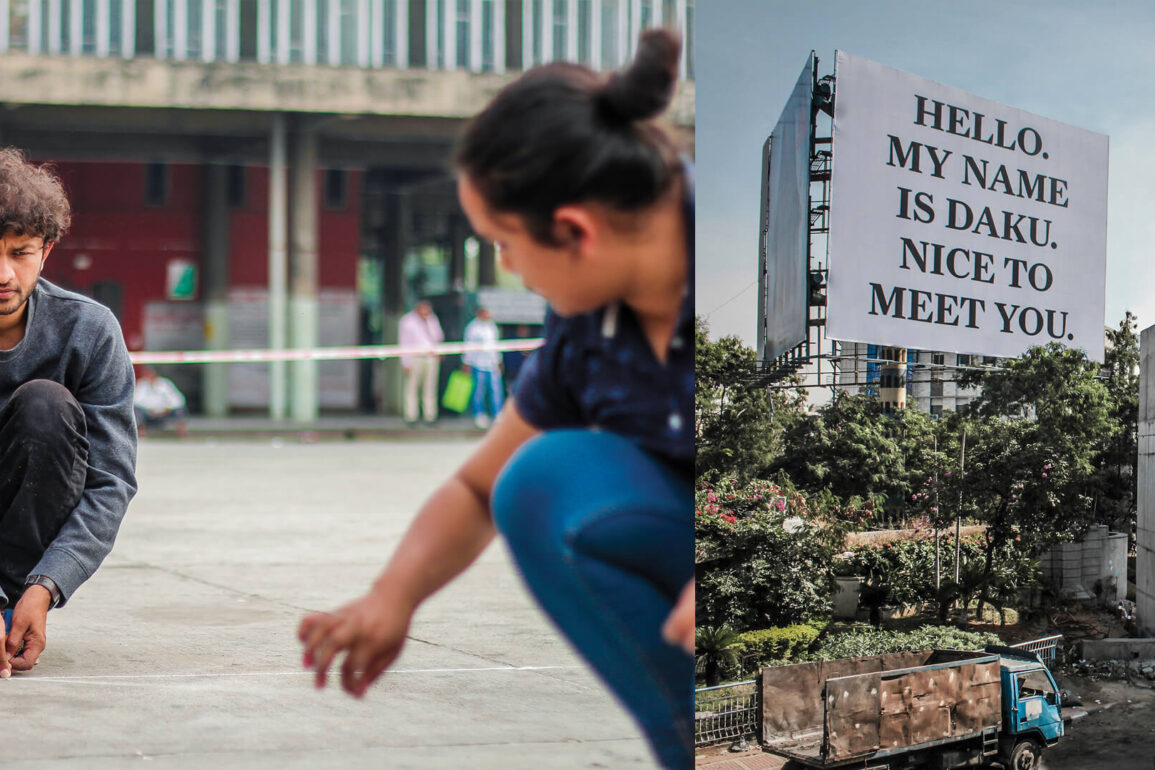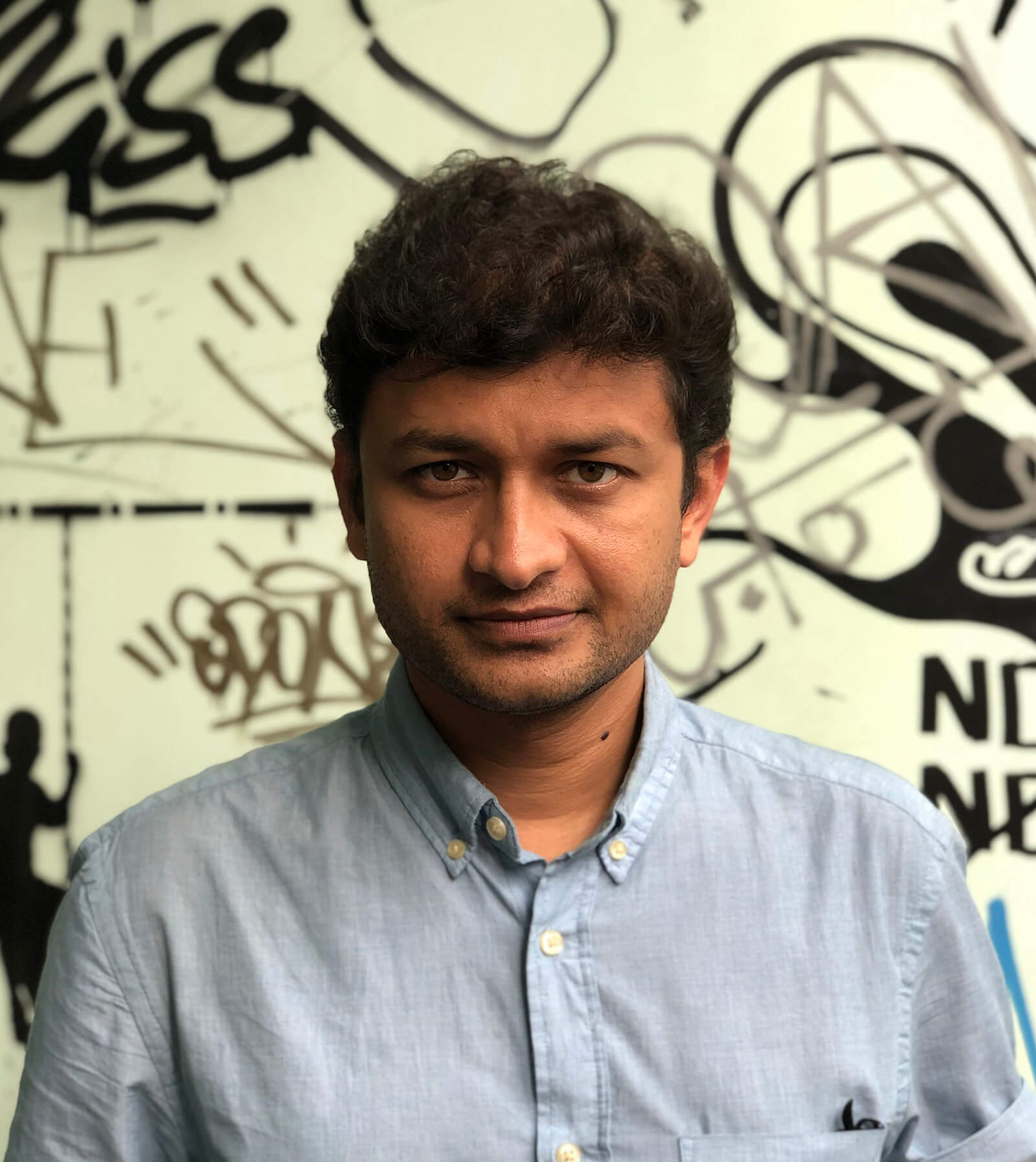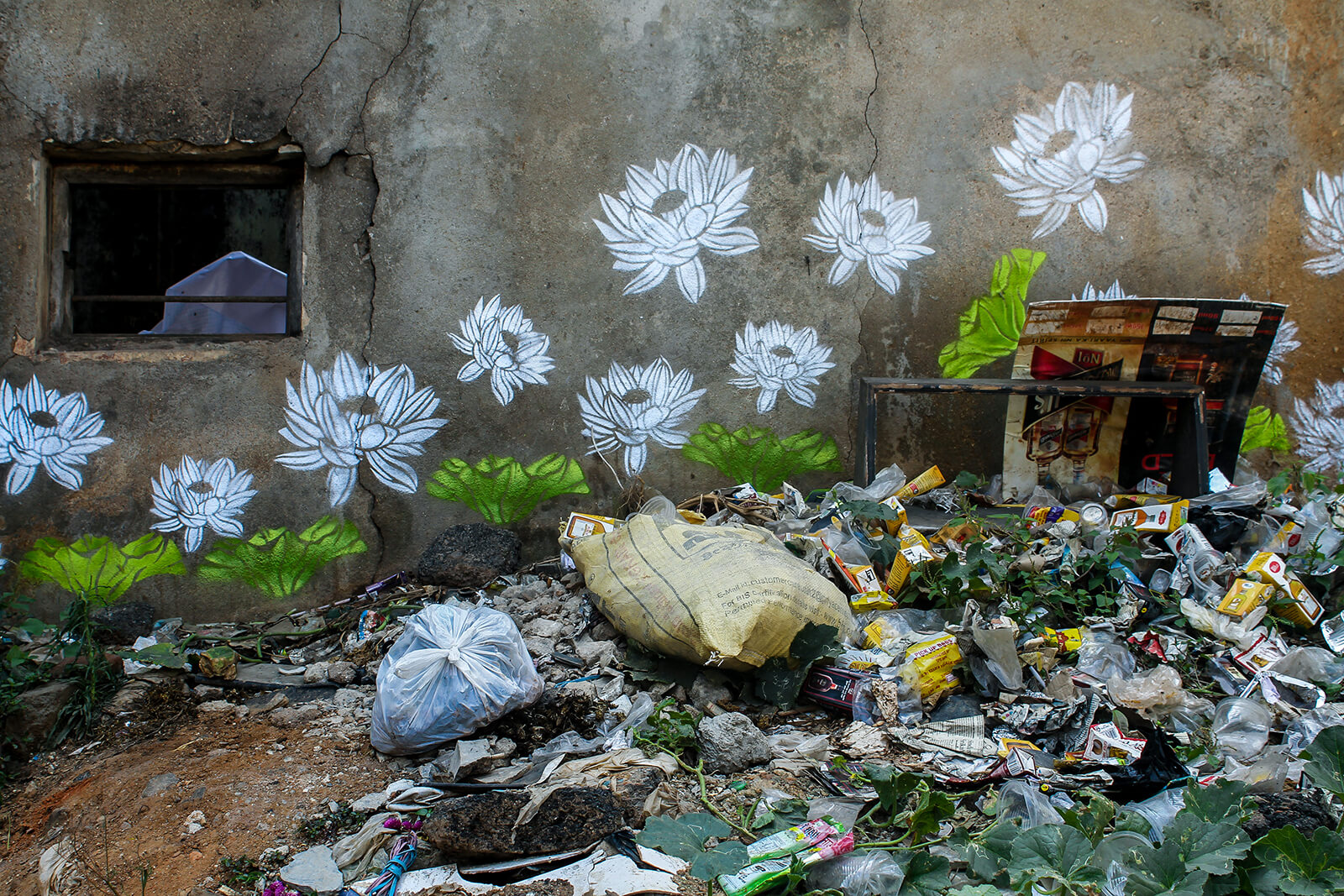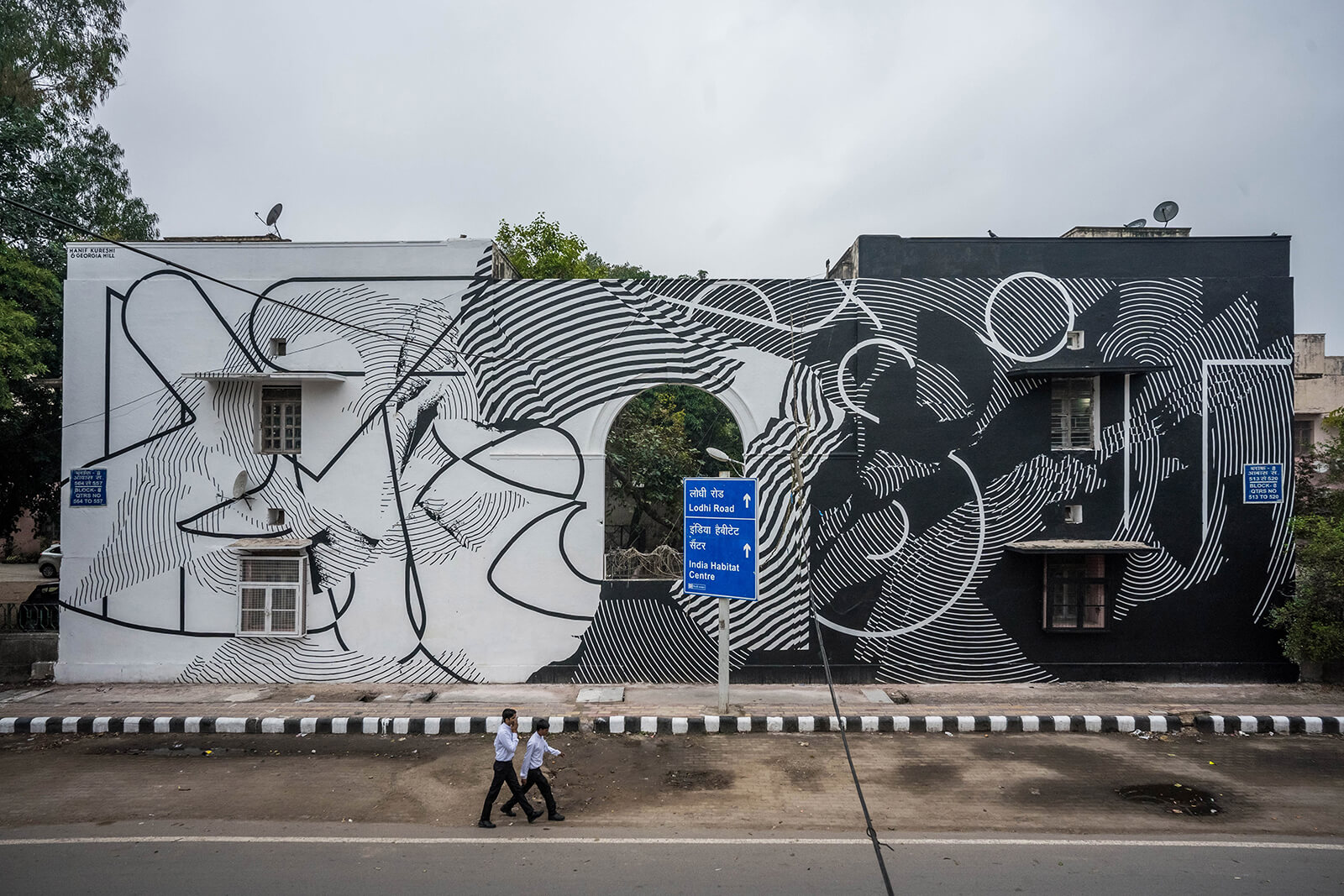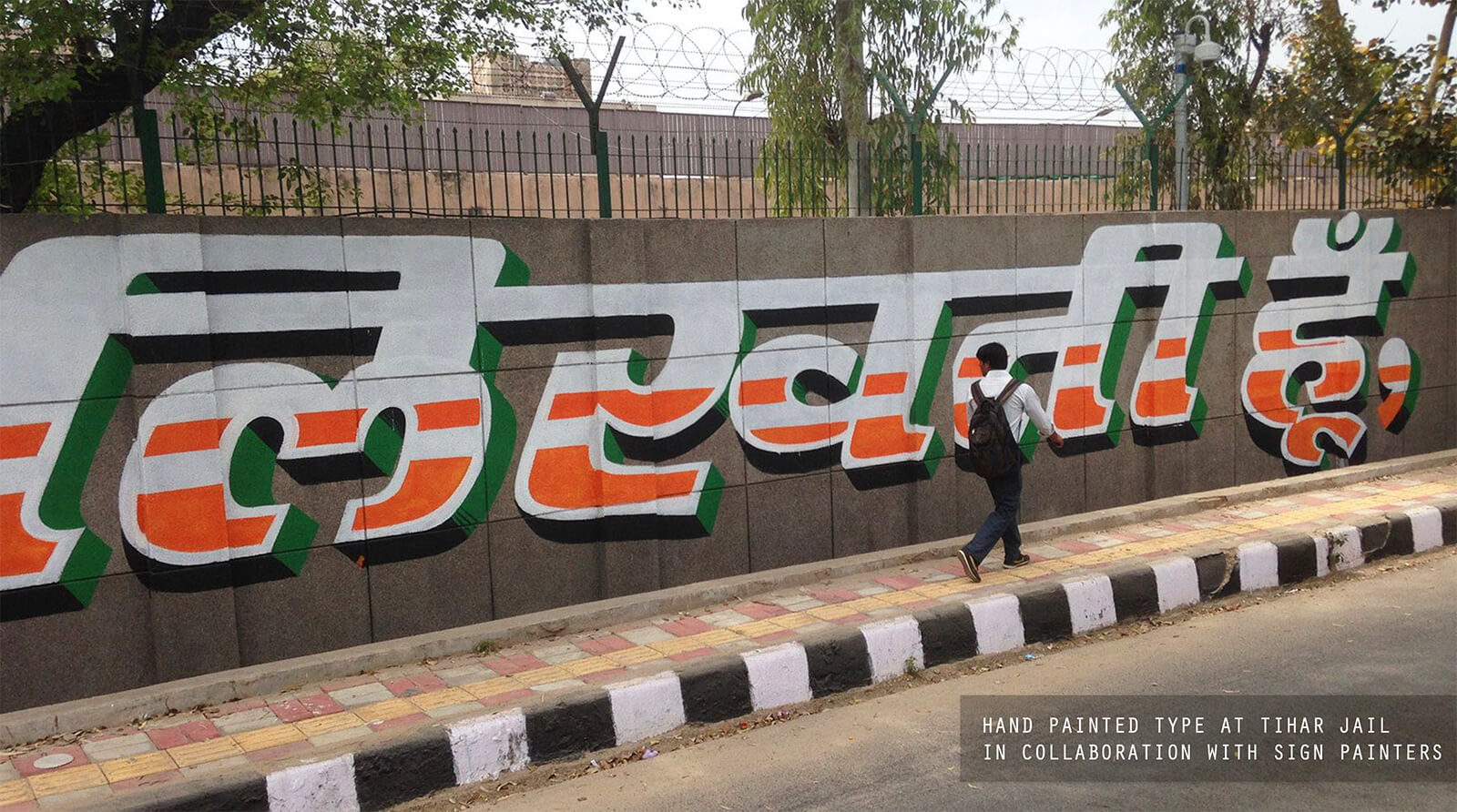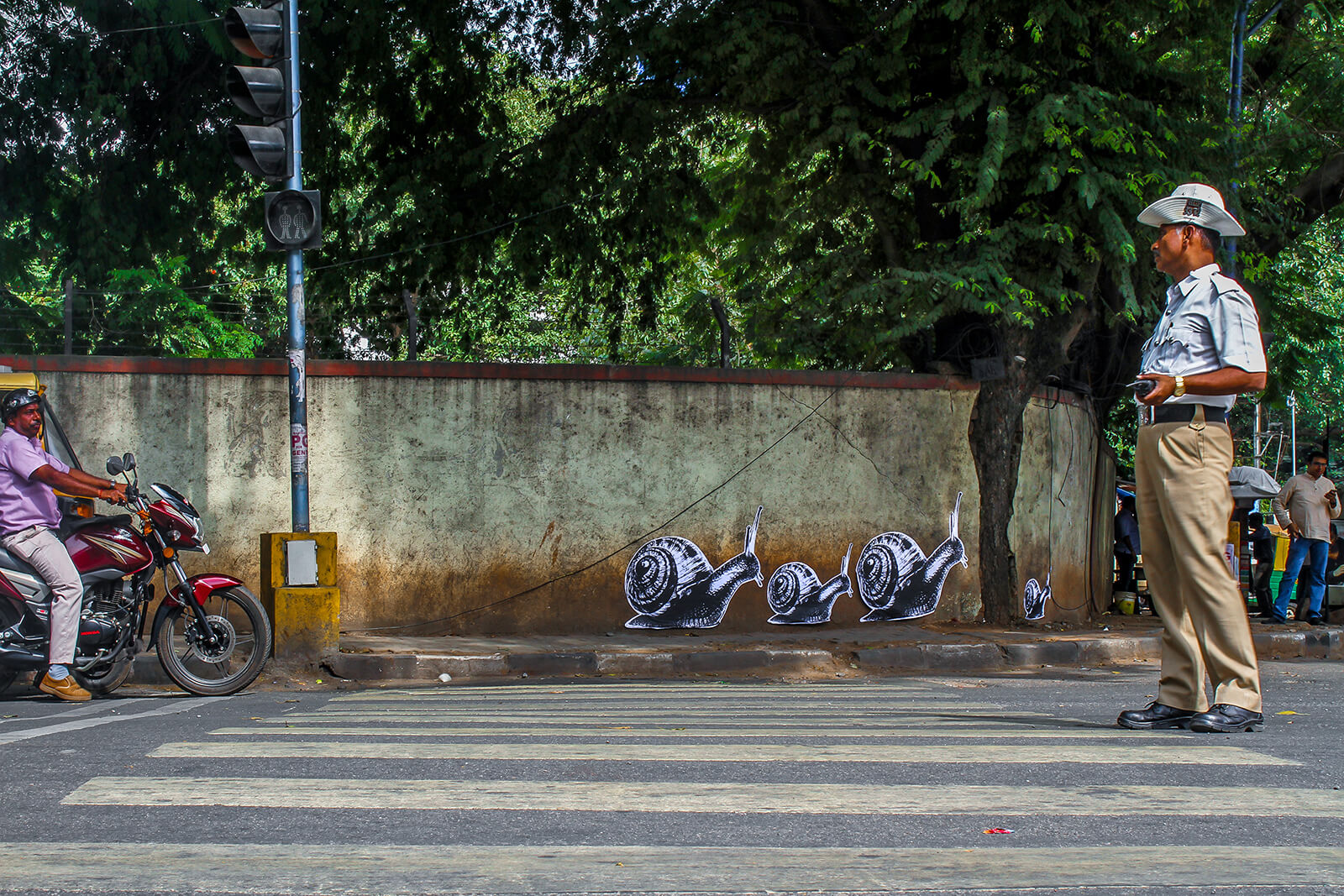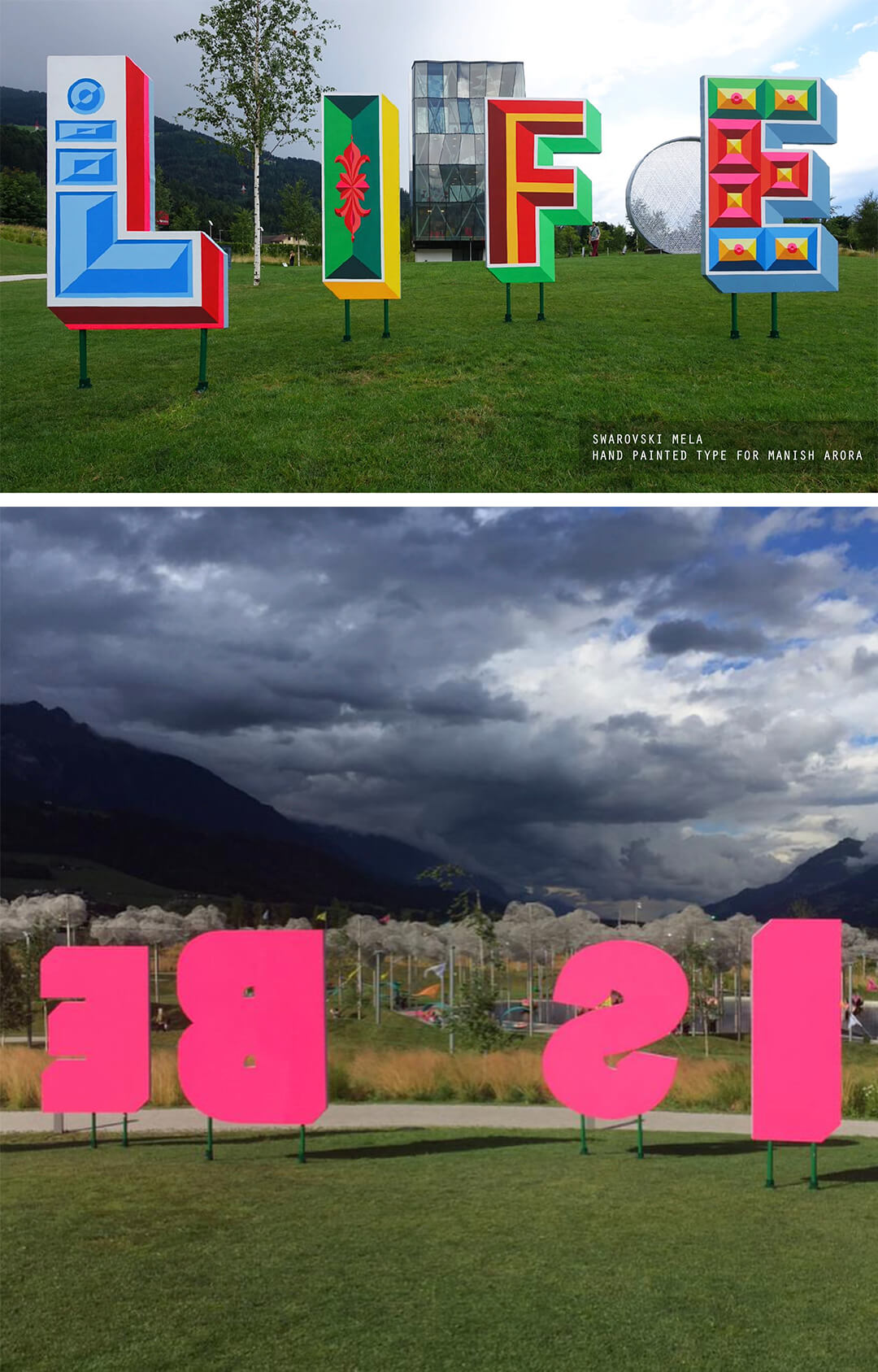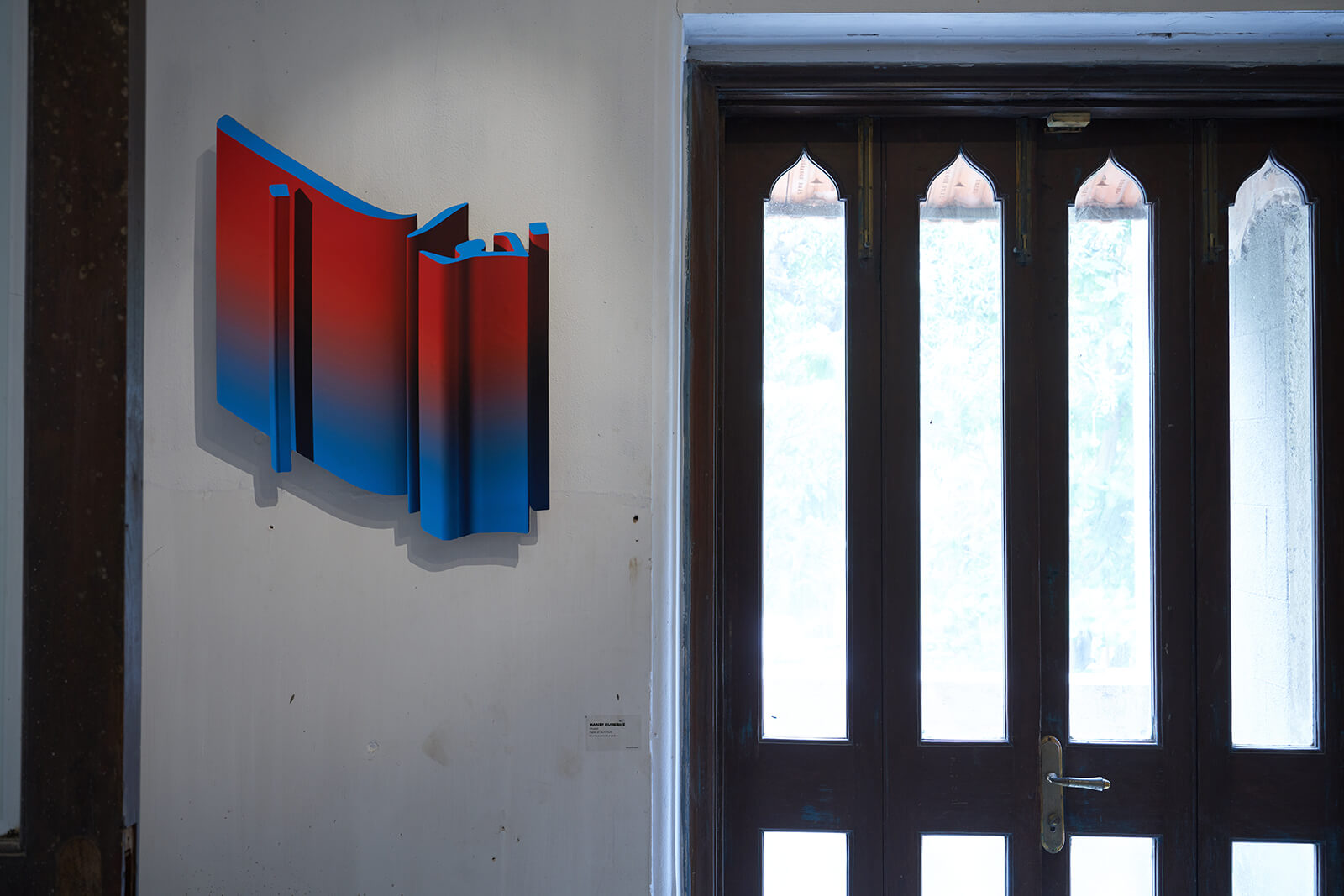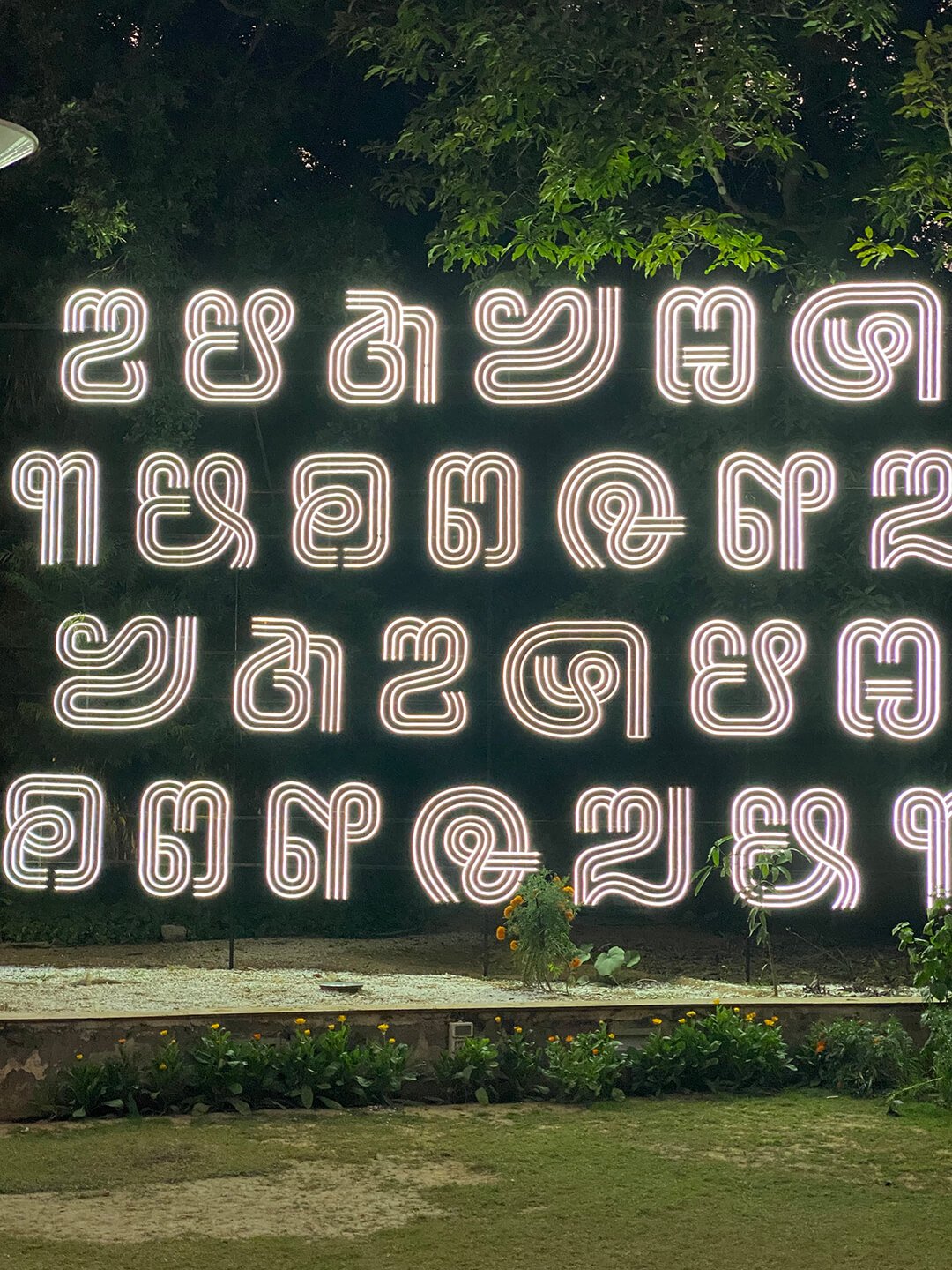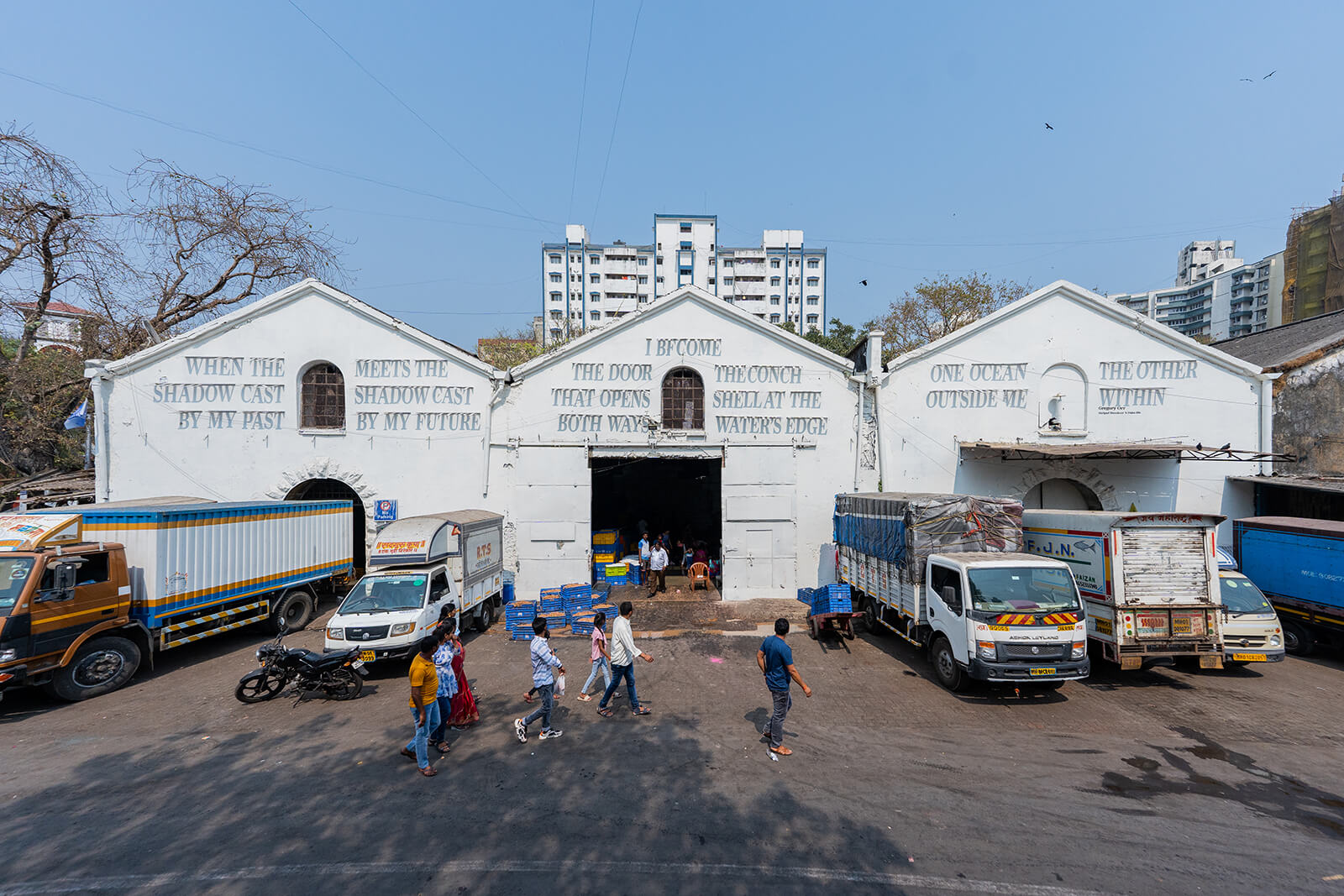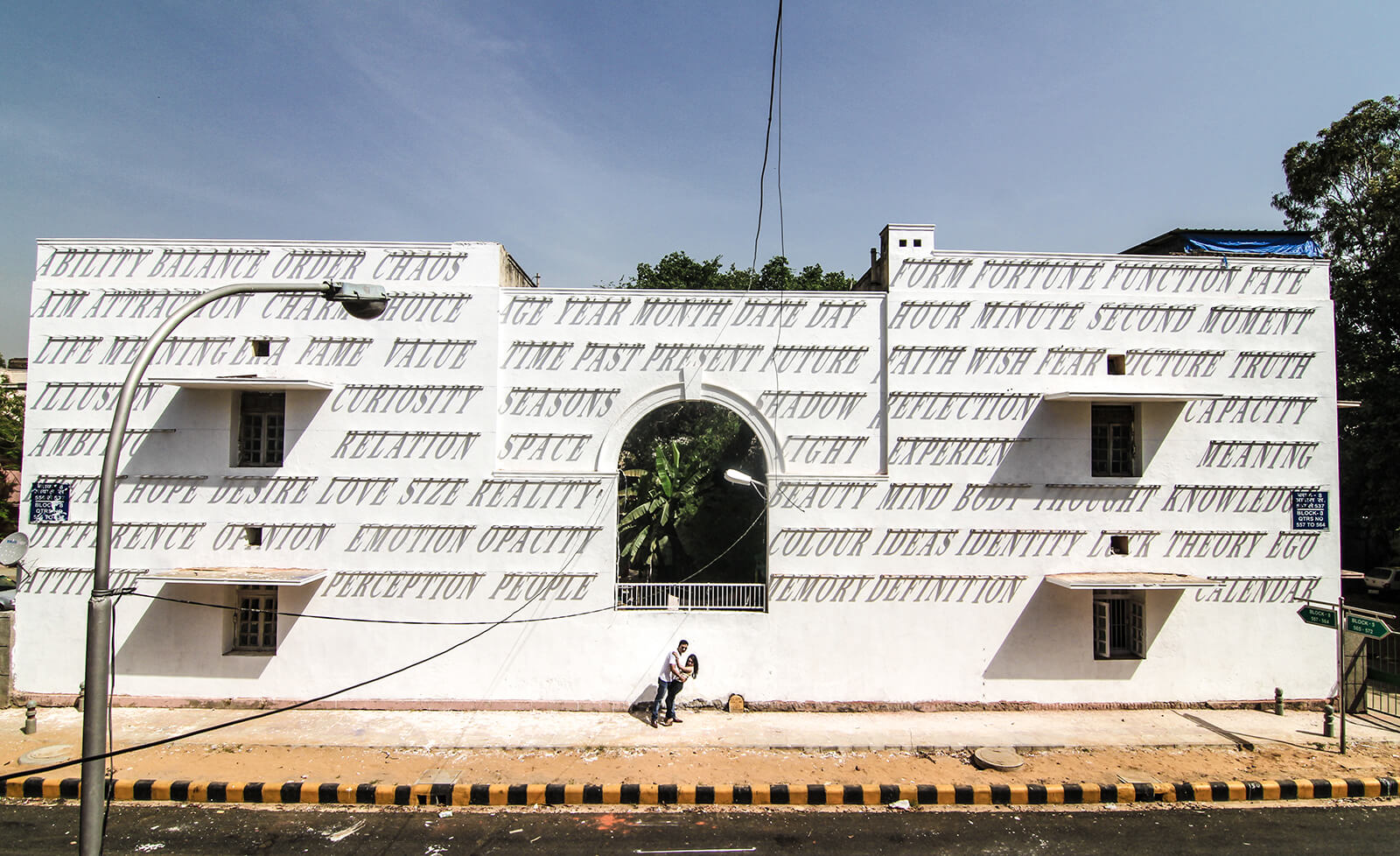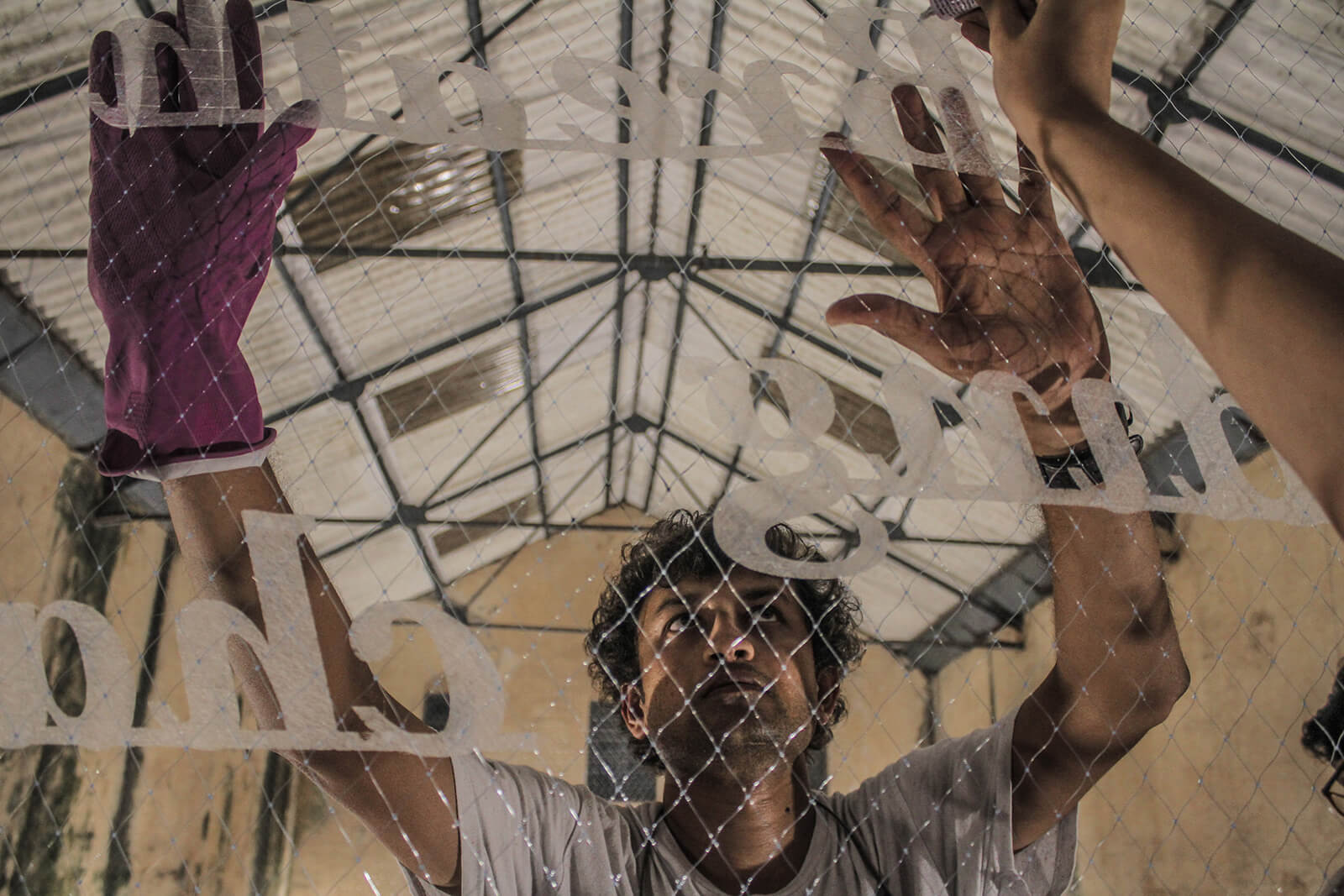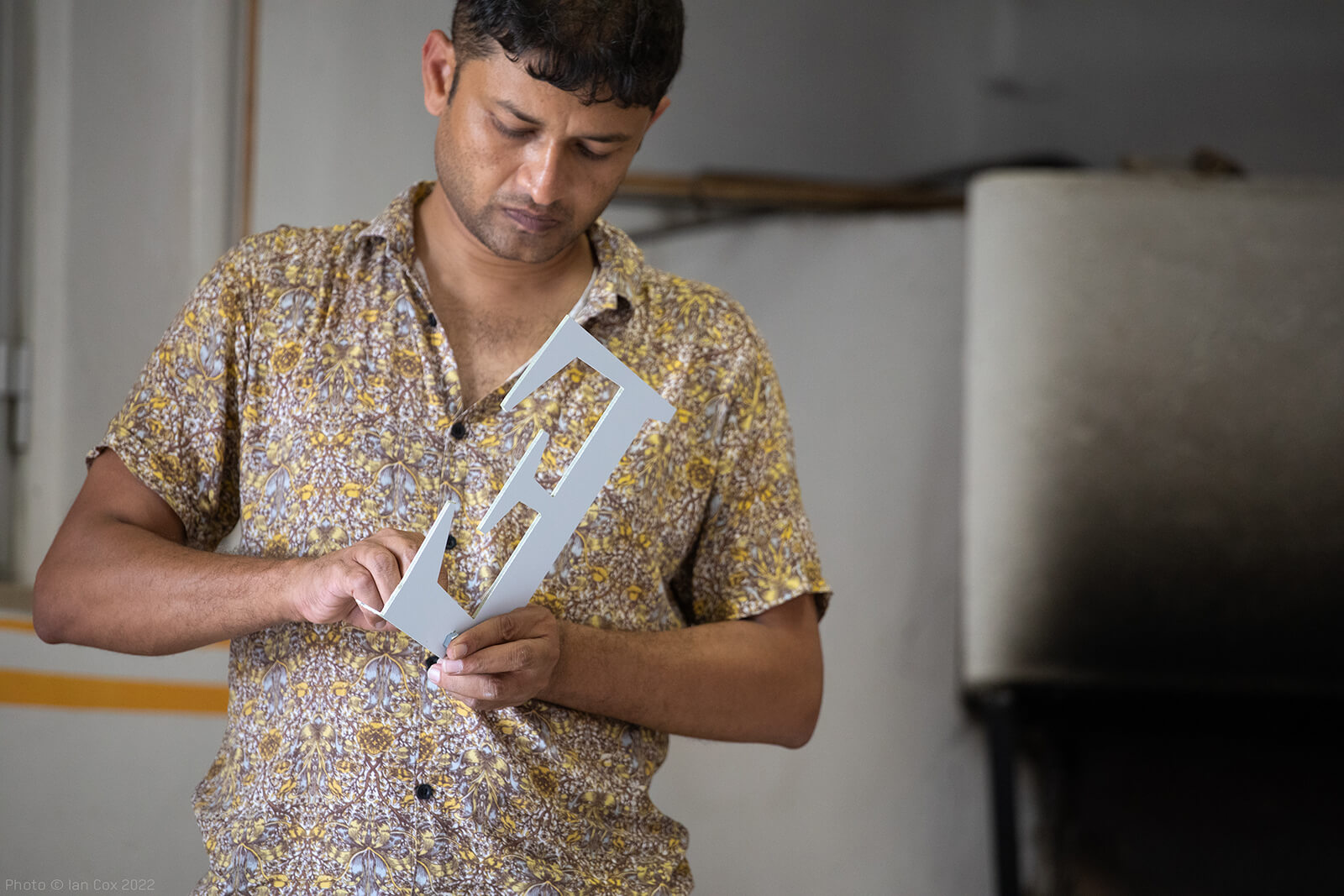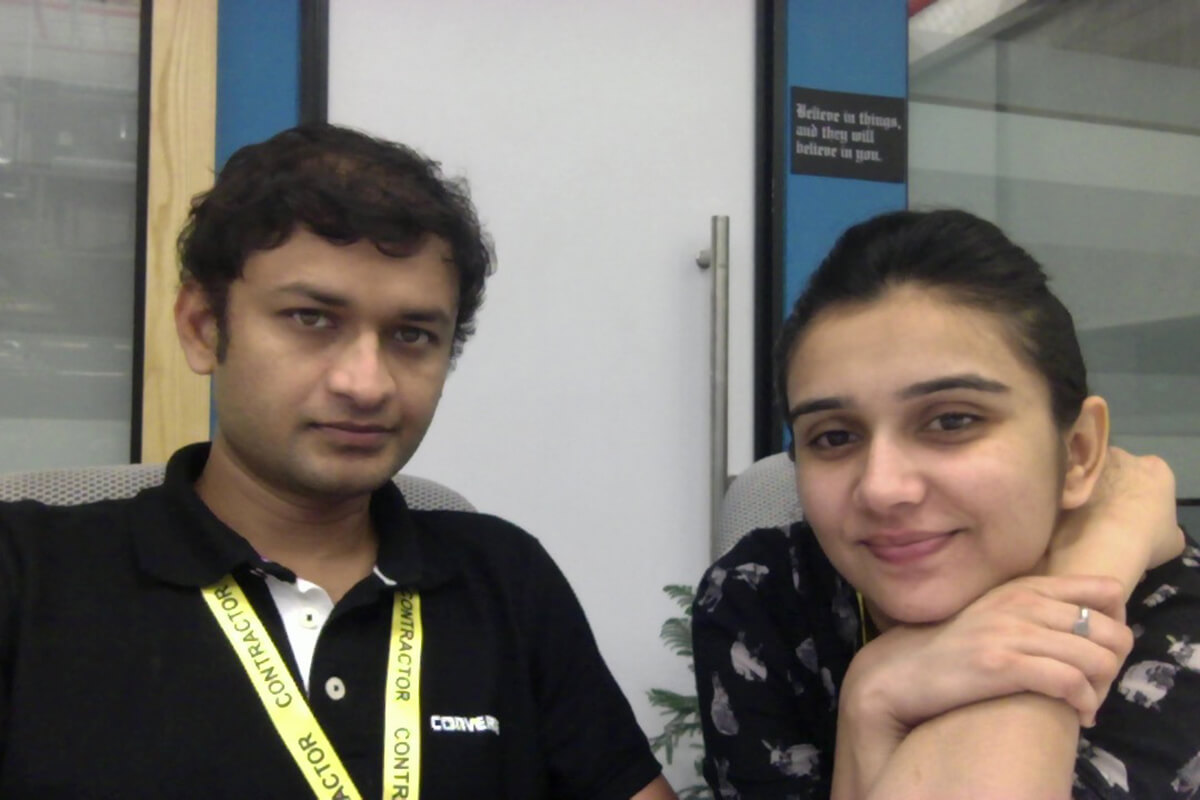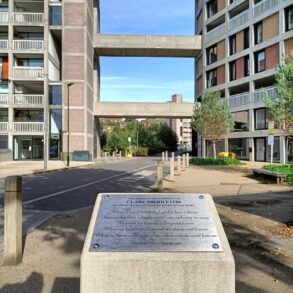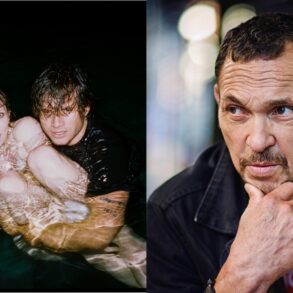I have a vivid memory of his deep hazel eyes on a fine morning in Delhi in the summer of 2016. Ushered into Hanif Kureshi’s cabin at the St+art India Foundation HQ, I met a lean young man, pensive and polite. What sort of guerilla bandit, or daku, comes bathed in such gentleness, humility, mystery and dexterity? “We contain multitudes,” Walt Whitman’s words rang in my ears. Aged 42, Hanif passed away after a battle with cancer on September 22, 2024.
Hanif was a contemporary artist, designer, typographer, art director and co-founder of the non-profit St+art India Foundation, conceived in 2014, which pioneered the urban street art movement in the country. But nothing was as powerful as his mask of the original Indian art undergrounder in an era when art was still a heavily curtained opera in the country. His street art, sprayed across underpasses, alleys and hangouts in Delhi in the 2000s, struck passersby like lightning, arousing a newfound curiosity in this anonymous writing on the wall. He was an elusive hero who didn’t mince his messages against capitalism and corruption, also making sure that creativity wasn’t compromised in the process.
At that time in 2016, Hanif’s work was a resounding commercial success. He was fresh off designing the Facebook office in Gurgaon, St+art India’s Bangalore kickoff and the Chakraview installation at the London Design Biennale that year. But one saw still less of the guerrilla artist leaving courageous art all over the capital’s walls (much before Instagram or influencership became the rage). Don’t you miss Daku, I pressed him. “You can either work with the establishment or you can work against it,” he said. With a young family, I understood that it was a difficult but significant choice for an artist who had endured a long journey from his village in Talaja, Gujarat, to tear away the boxed notions of ‘art’, to take risks and make a difference.
Soon, the guerrilla knight emerged again in full glory, with social media fanfare – most recently painting not just within the country but across the world, his words playing out in shadow and light. A leader in participatory public art, he was a remarkably private person. “Very slow for those who wait / very fast for those who are scared / very long for those who lament / very short for those who celebrate,” read his most recent installation on time, in collaboration with the Wildstyle Gallery in Uppsala in Sweden, as if a foreknowledge of life’s events.
Back home, St+art India continued to paint 29 cities with over 600 murals, growing into a larger community that went beyond urban walls, extending to installations, live performances and extensive programming in public spaces. Arjun Bahl, one of the other co-founders of St+art, said, “Hanif and I had a 24 x 7 relationship as friends. I’d never watch the clock before calling him and neither would he, as excited as he was about projects. It’s funny because he had a habit of overbooking his time, not realising he had already committed it. He always wanted to be there for people. Once, he popped into a ST+art founders meeting with soap lather on his face and we had a gala time. He said he was in the shower but [that] he was ready for the meeting! He was a multitasker and he loved it. We made a great team; there was no pretence about him. He believed in living to the fullest and till the end, he was enjoying [life] — focusing on his health, doing yoga, reading, recalibrating his life.”
It was during Hanif’s years at the Baroda College of Art that he had an important realisation – traditional typography had a long journey towards technological innovation. His years in advertising at Ogilvy and Wieden+Kennedy gave him the confidence and experience to take this on. Gradually, he transformed the typography landscape by patiently archiving ancient scripts, abstracting, digitising and re-adapting these to playful visual forms.
Hanif’s work harnessed language, colour and freedom and he was staunch in his belief that this celebration must be open to all. “If you ask any auto driver to name an artist, he won’t have any idea apart from MF Husain, maybe. We are a country with such a rich tradition in art but the current scene is a very limited space. It needs to move out of elitist galleries and public participation is important. We need to tell people that the street is also a medium of art. And the more art they see, the more art they will create. Sadly, the only art being consumed is advertising, political propaganda or something commercial…and because it’s everywhere, we don’t even realise it!” Hanif said in our conversation. He believed that the street art movement would finally “arrive” in India only when “the average auto-rickshaw driver knows about art”.
As a boy, when Hanif left his village brimming with truck-letterists to write the script of his own life, he was mindful about rooting his work in ancient wisdom and craft. His installation, Saurashtra, exhibited at the STIR Gallery in 2019 as part of Materiology 2.0, was an experiment in typography as transformative play, co-created with designer Shiva N. It was the perfect testament to his cause of reviving ancient hand-painted type and of the theme of the event – What Happens When Yesterday Becomes Tomorrow?– a theme that also reflects his legacy. “At any given moment, he was working on 20 projects and 10 would be the biggest undertakings in the world. And yet he never ever seemed too busy or in any kind of rush. In an industry populated by inflated egos, insecurity and mind-numbing mediocrity, Hanif was a radical anomaly,” wrote Shiva N in a social media tribute to Hanif.
From turning Delhi’s lanes into a joyous creative playground with the Lodhi Art Project to bringing Mumbai’s Sassoon Docks alive with large-scale paintings and installations on its fish processing warehouses during the Mumbai Urban Art Festival and celebrating Goa’s locals with the mammoth Cutout Project, Hanif had an eye for the most unassuming spots and saw potential where no one looked. He gave wings to some talented young illustrators, local artists and graphic designers – many of them too shy to be discovered otherwise. “I was 15 when I first interned with St+art. He sat with me patiently, mentoring and guiding me with the best design tools and telling me all about the street art movement in New York in the ‘80s. It is because of him that I completed design college and am devoted to the field today,” Ujaan, a young designer-animator, said to STIR.
He was both soul and scale. His works found audiences at the Venice Biennale, Centre Pompidou, Paris, Triennale Design Museum, Milan, among others, just as well as they delighted the kids of Dharavi. The Lodhi Art Project sports murals by the Aravani Art Project, a collective of cis and transgender women, who recently showed their work at the 60th Venice Biennale.
“Hanif was the Indian Banksy who first turned street graffiti into a legitimate art form in the Indian context. I would bump into him sporadically in Goa with his newest converts and learn how this unobtrusive bunch was charting a distinctly Indian imprint path on forgotten walls and spaces across the world,” shared photographer Rohit Chawla.
Not just a typographer, Hanif alchemised signage, letterform, symbolism, social commentary and critical consciousness into visual spectacles that were larger than life but full of small details. Friends, family and fraternity are barely over the shock of losing him in his prime. Hanif is survived by his wife Rutva Trivedi and son Brahma. “He was very proud of where he came from, his roots. He would tell me so many stories from his childhood…” Trivedi said to STIR. “I learnt so many things from Hanif in the last 15 years. But one thing I [learned] from him constantly is how to make the task ‘simple’ and ‘straightforward’ yet impactful. And we can clearly see that in all his works.”
The world was Hanif’s graffiti wall. As a child, he wanted to be a sign painter – and always continued to believe that he was, in fact, a refined sign painter in some ways. A sign, indeed, of the genius of our times – and a sign for the democratic, diverse, courageous art futures to come.
This post was originally published on this site be sure to check out more of their content.




